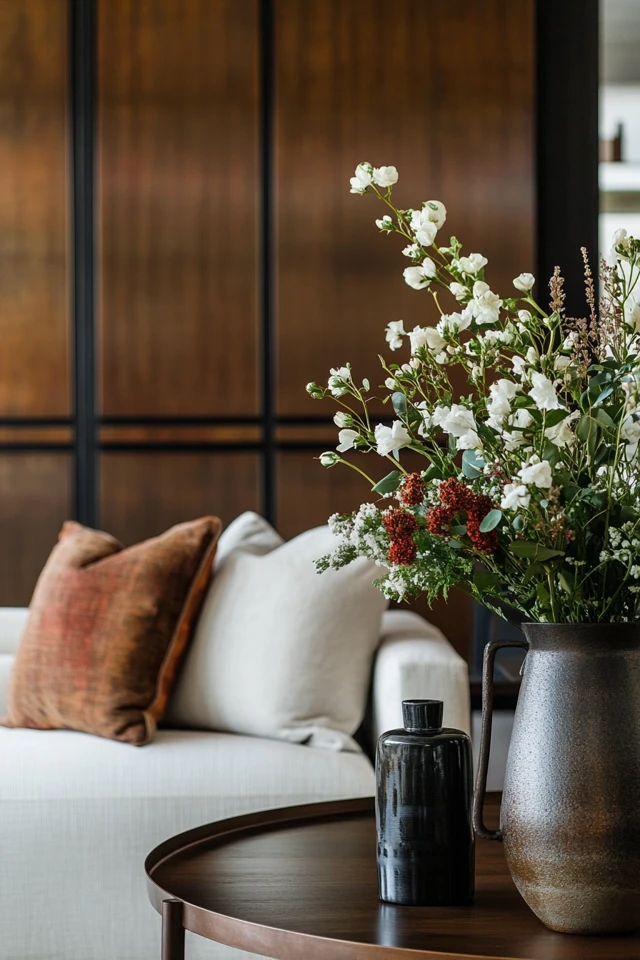There’s something undeniably charming about a space that masterfully combines the character of vintage pieces with the sleekness of modern design. It’s the kind of balance that feels timeless, layered, and oh-so-personal. I’ve always been drawn to this style because it tells a story—it’s a reflection of where you’ve been, where you are, and where you’re going.
My first experiment with mixing old and new came years ago when I inherited my grandmother’s beautiful antique dresser. While it was stunning on its own, it felt out of place in my otherwise modern apartment. Instead of replacing it, I decided to work with it. I paired it with a minimalist lamp, a contemporary chair, and a bold abstract print. Suddenly, the dresser wasn’t just a relic—it became a showstopper, elevated by the contrast of its newer counterparts.
Over the years, I’ve come to appreciate how this blend of old and new can breathe life into a room, giving it depth and character that’s hard to replicate with a single design era. In this guide, I’ll walk you through the art of mixing old and new in your aesthetic room, from finding the perfect balance to creating a cohesive yet eclectic vibe.
Why Mix Old and New in Interior Design?
1. Add Depth and Personality
A room filled with only new furniture can sometimes feel impersonal, like it was plucked straight from a showroom. Mixing old and new creates a sense of history, layering your space with meaning and intrigue.
2. Highlight the Best of Both Worlds
Vintage pieces bring warmth, character, and craftsmanship, while modern design offers functionality, sleek lines, and fresh perspectives. Together, they create a room that feels both inviting and current.
3. Embrace Sustainability
Incorporating vintage or antique furniture is an eco-friendly choice that reduces waste and extends the life of well-made pieces. It’s a win for your style and the planet.
Tips for Mastering the Old-Meets-New Aesthetic
1. Start with a Statement Piece
Choose one standout item—whether it’s an antique dining table, a retro sofa, or a mid-century modern credenza—as the anchor for your room. Build the rest of your design around it.
- Example: Pair a vintage velvet armchair with a sleek, glass coffee table for a contrast that feels intentional.
2. Play with Contrast
The key to mixing old and new is contrast. Think about the textures, materials, and shapes of your pieces. If one item is ornate and detailed, balance it with something clean and minimal.
- Example: Hang an oversized, modern abstract painting above a carved wooden dresser to create visual interest.
3. Use Color to Tie Everything Together
A cohesive color palette can unify even the most disparate styles.
- Pull colors from your vintage pieces and repeat them in modern accents like pillows, rugs, or artwork.
- Alternatively, choose a neutral base (like white, gray, or beige) to let both old and new pieces shine.
4. Blend Materials
Mixing materials is an excellent way to merge different design eras. Combine wood, metal, glass, and textiles to create a rich, layered aesthetic.
- Example: A reclaimed wood coffee table paired with a modern metal floor lamp creates a dynamic look that feels both warm and industrial.
5. Balance Proportions
Scale matters when combining old and new. Too many bulky vintage pieces can feel heavy, while an overload of sleek modern furniture might lack warmth. Aim for a mix of shapes and sizes to maintain balance.
- Example: If you have a chunky antique armoire, pair it with slim-legged chairs or a modern low-profile sofa.
6. Layer with Décor
Accessories are your secret weapon for pulling together old and new styles.
- Use vintage vases, books, or candlesticks to add charm to a modern bookshelf.
- Introduce contemporary art or a minimalist clock on top of an antique sideboard for a stylish juxtaposition.
Picture Gallery
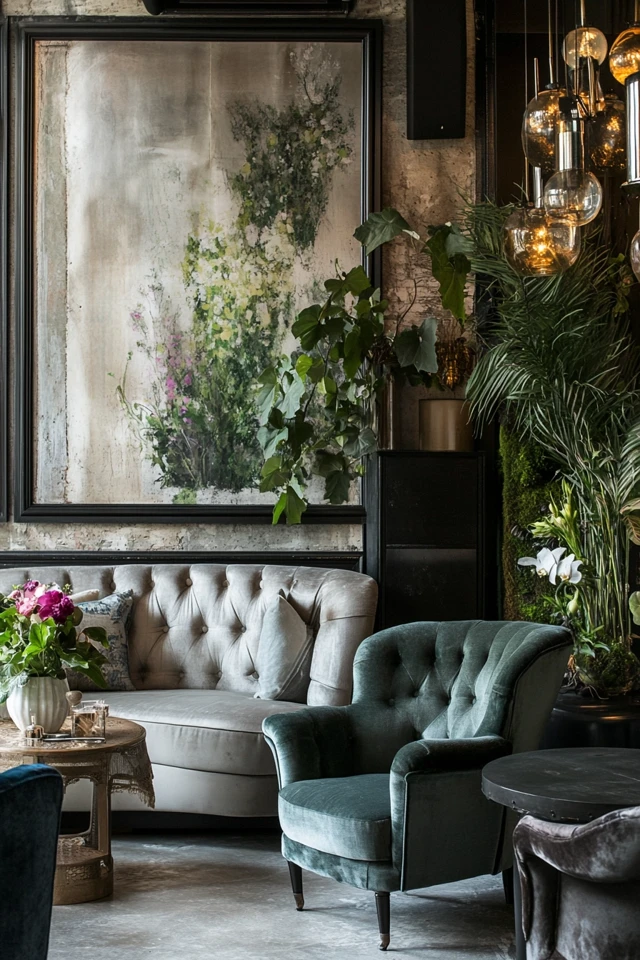
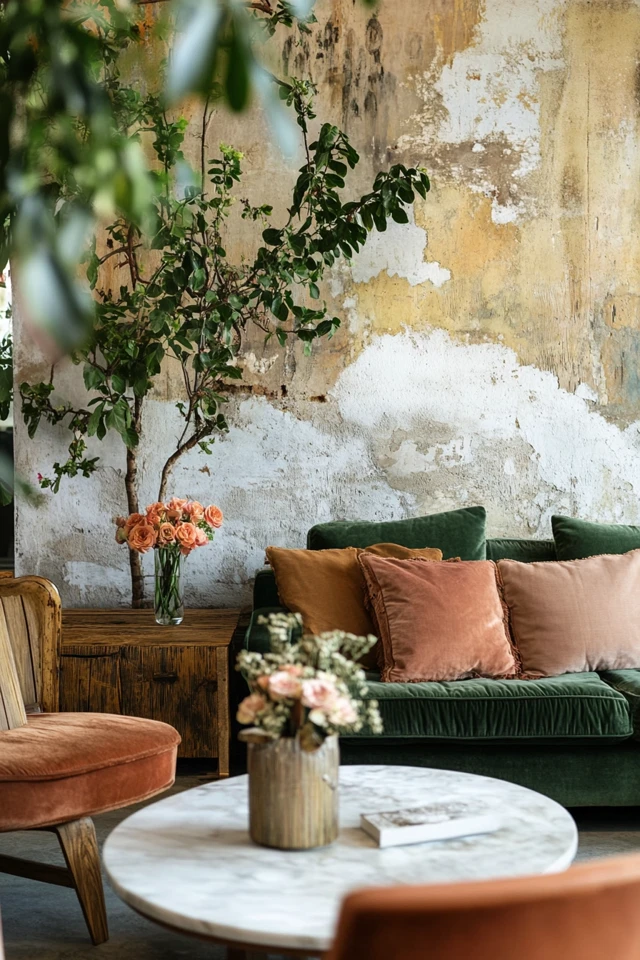
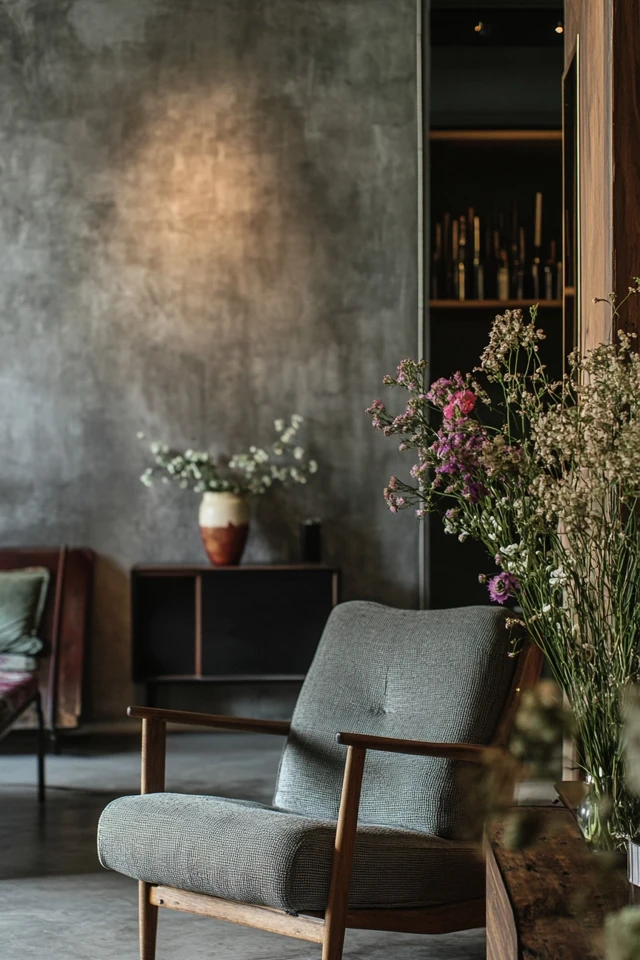
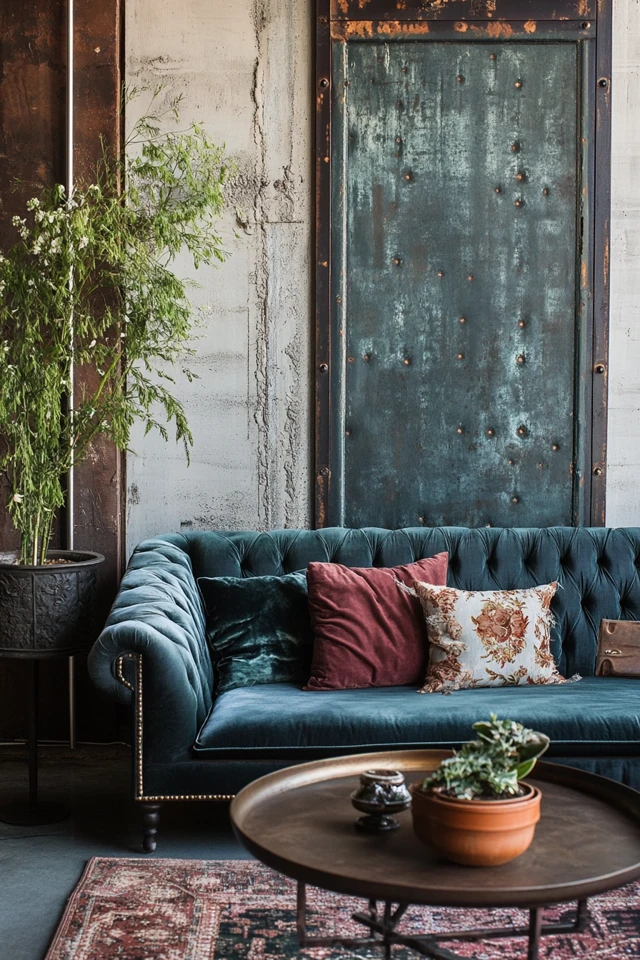
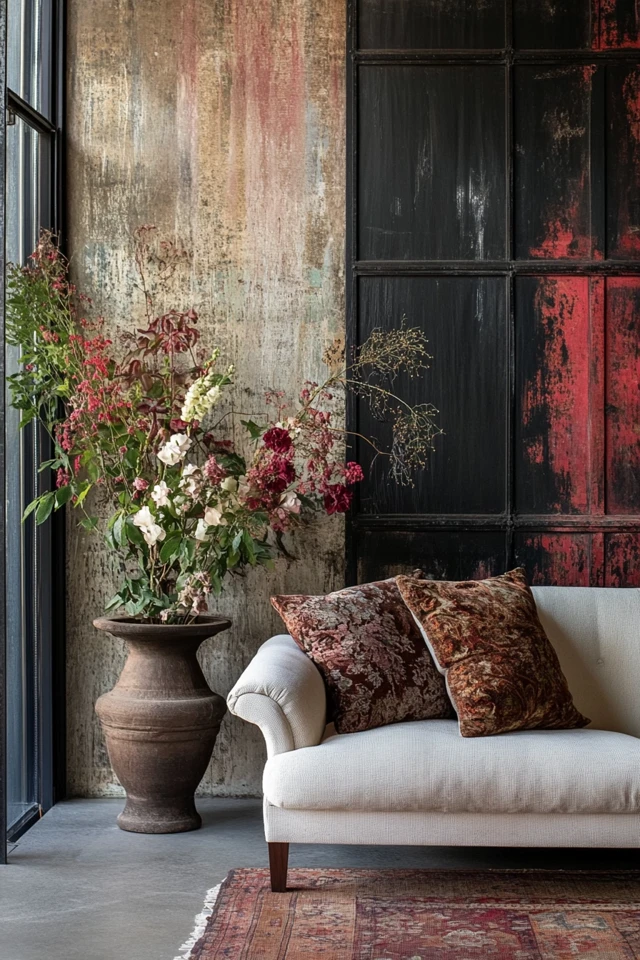
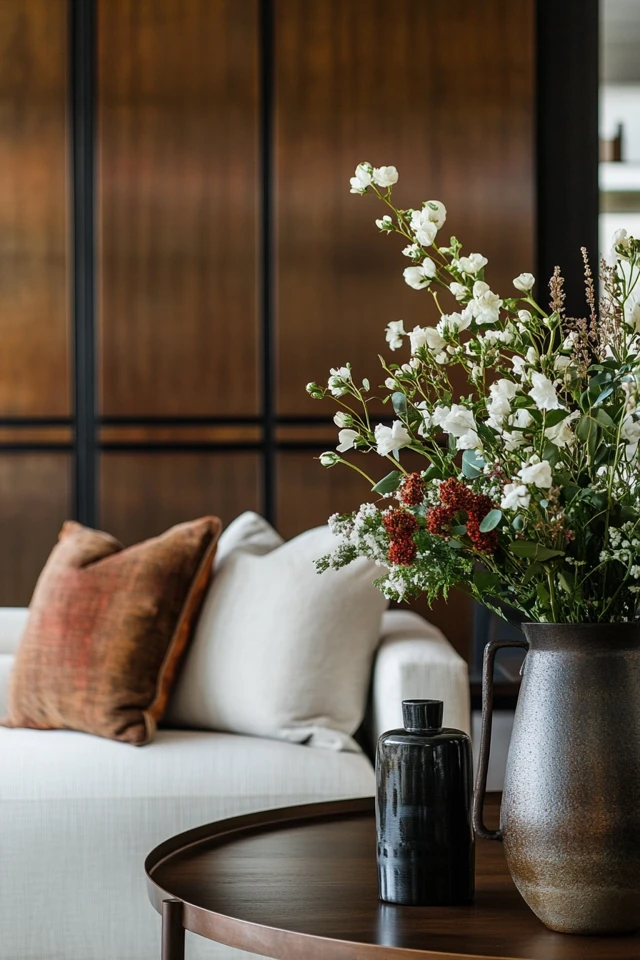
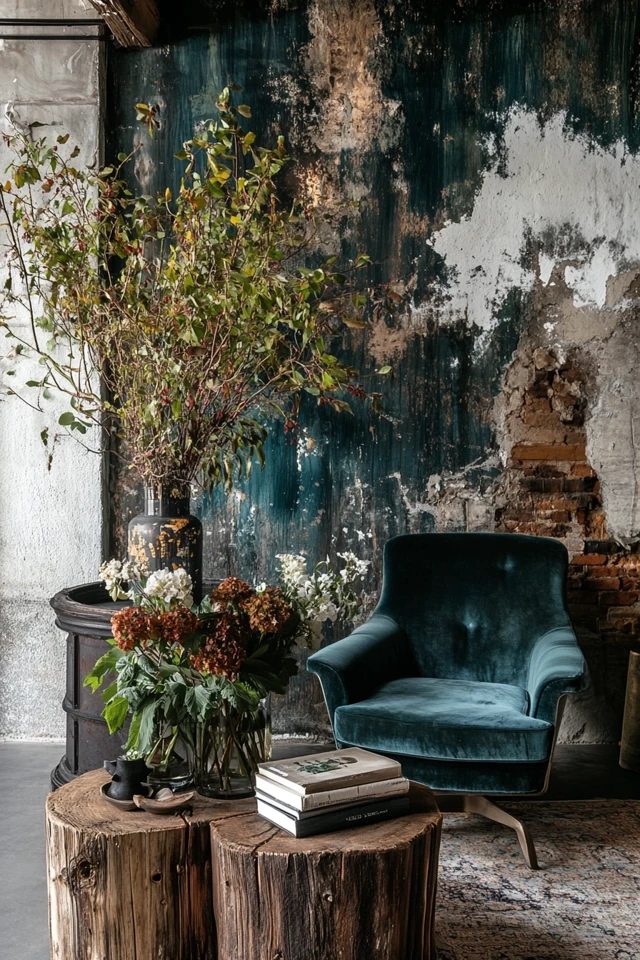
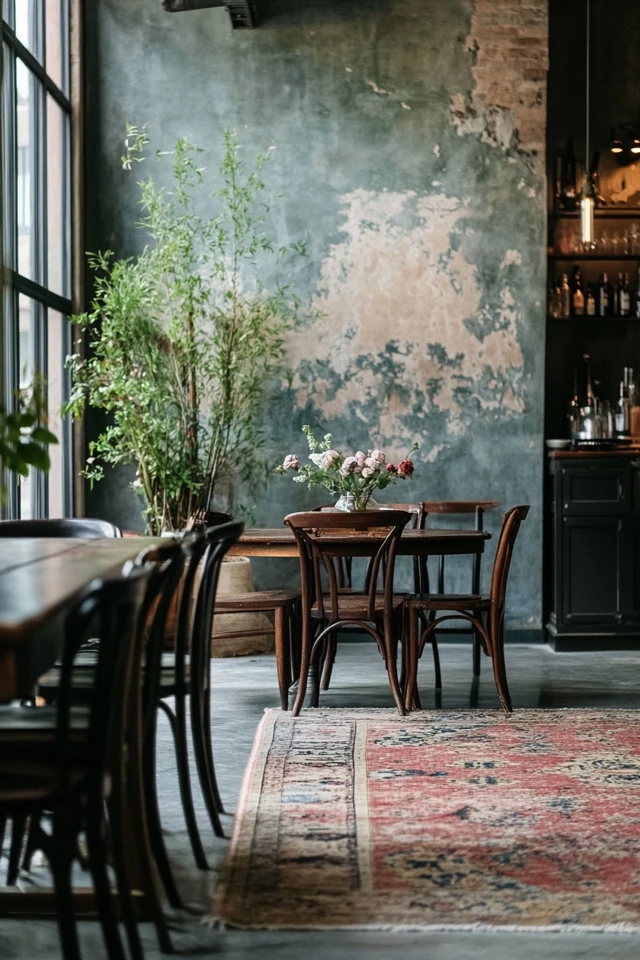
Examples of Old and New Combos That Work
1. The Classic Living Room
- Old: A tufted Chesterfield sofa in leather or velvet.
- New: A sleek glass coffee table and abstract wall art.
2. The Eclectic Dining Space
- Old: A rustic farmhouse dining table with visible grain and wear.
- New: Acrylic ghost chairs or a set of mid-century modern dining chairs.
3. The Modern Bedroom
- Old: A carved wood headboard or an antique trunk at the foot of the bed.
- New: Clean-lined bedding in neutral tones and contemporary pendant lights.
4. The Industrial Office
- Old: A vintage drafting table or leather-bound books.
- New: A minimalist desk lamp and a modern ergonomic chair.
Mistakes to Avoid
1. Overcrowding the Room
It’s easy to go overboard with too many pieces from both eras. Instead, focus on a few standout items and let them breathe.
2. Ignoring the Room’s Architecture
Work with your space, not against it. If you’re in a historic home, let the vintage details shine and accentuate them with modern touches. If you’re in a new-build apartment, use vintage pieces sparingly for character without overwhelming the clean lines.
3. Mixing Too Many Styles
While mixing old and new is encouraged, mixing too many design styles can make your room feel chaotic. Aim for no more than 2-3 styles in one space for cohesion.
Styling Tips for Specific Rooms
Living Room
- Add a vintage rug as a base to ground your modern furniture.
- Use a contemporary sectional and balance it with a vintage coffee table or sideboard.
Bedroom
- Pair a vintage vanity with a modern upholstered bed.
- Hang contemporary sconces above antique bedside tables for a functional yet stylish look.
Kitchen
- Combine old-world charm with modern convenience by pairing vintage bar stools with a sleek island or glossy subway tiles with a reclaimed wood table.
The Magic of Storytelling Through Design
What makes mixing old and new so compelling is the story it tells. Every vintage piece has a history, a past life that adds depth to your space. And every new item represents your present and future. Together, they create a dialogue that’s deeply personal and uniquely yours.
One of my favorite pieces in my home is a mid-century modern chair I picked up at an estate sale. I paired it with a brand-new geometric rug and a gallery wall of family photos in modern black frames. Every time I sit there, I feel connected to the past while appreciating the beauty of the present. That’s the magic of mixing old and new—it turns a house into a home.
Conclusion
Mixing old and new in an aesthetic room is an art that requires a bit of experimentation, but the results are always worth it. When done right, it creates a space that feels intentional, stylish, and deeply personal.
Start with a single vintage piece and layer in modern elements around it. Don’t be afraid to play with contrast—mixing textures, colors, and materials to strike the perfect balance. And most importantly, let your space reflect you.
Your home should tell your story, and there’s no better way to do that than by blending the timeless charm of the past with the fresh energy of the present. So, go ahead—dig into those vintage shops, revisit heirlooms, and start creating a room that’s not just aesthetic but truly one of a kind.
FAQs
1. How do I find the right vintage pieces?
Check out thrift stores, flea markets, estate sales, and online marketplaces like eBay or Facebook Marketplace. Look for pieces with good bones that you can restore or repurpose if needed.
2. Can I mix multiple design styles in one room?
Yes, but limit yourself to 2-3 styles to avoid a cluttered look. For example, mix vintage industrial with Scandinavian modern for a cohesive yet eclectic feel.
3. How can I make sure my room doesn’t look outdated?
Balance vintage items with modern elements like contemporary art, lighting, or accessories. Keep the room feeling fresh with a neutral color palette.
4. What are some affordable ways to mix old and new?
Thrifting and upcycling are budget-friendly options for vintage pieces. Pair them with affordable modern finds from stores like IKEA, Target, or Wayfair.
5. Is it okay to mix different wood tones?
Yes! Mixing wood tones adds depth and interest to your space. Just make sure there’s some cohesion, like similar undertones or a consistent finish.

